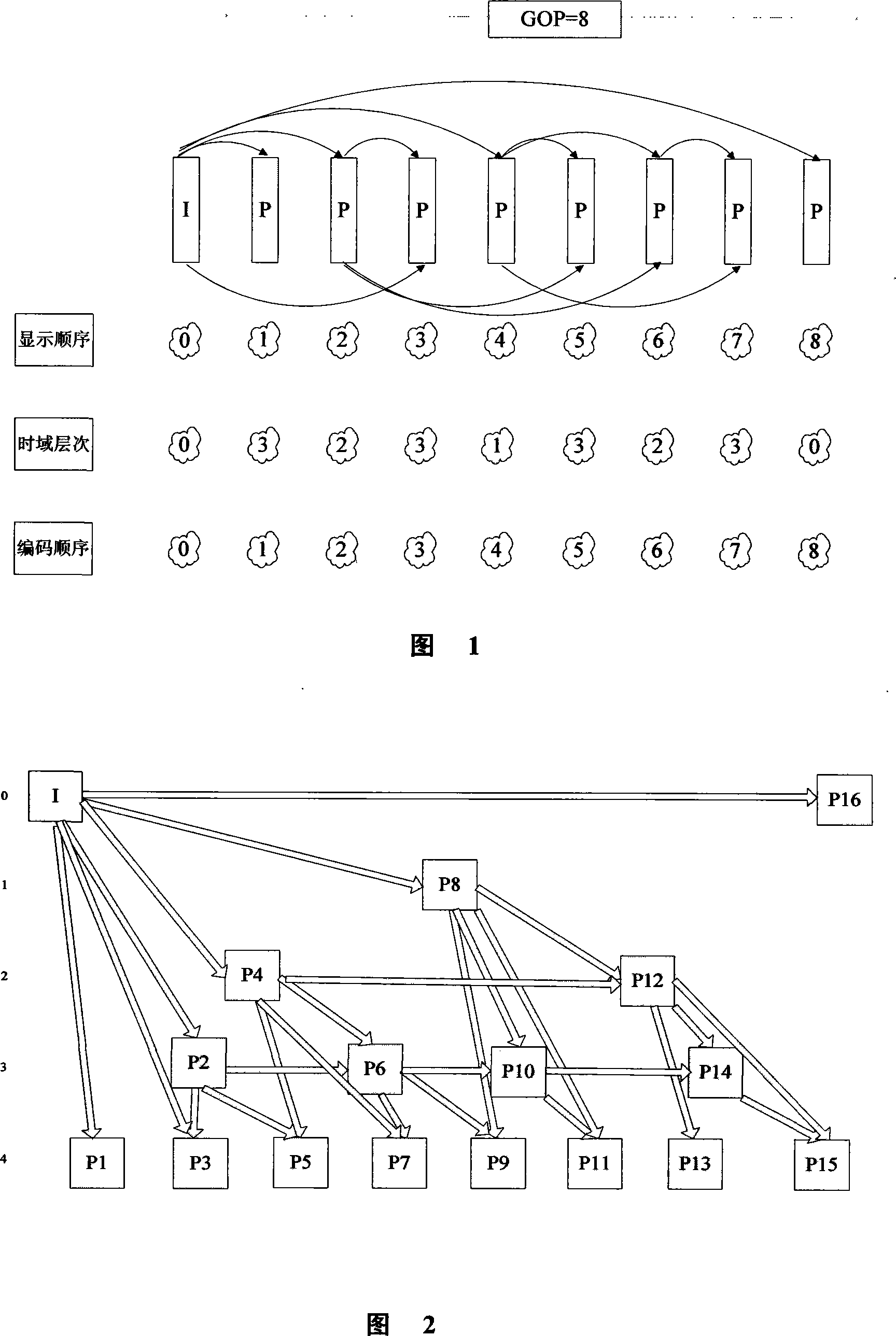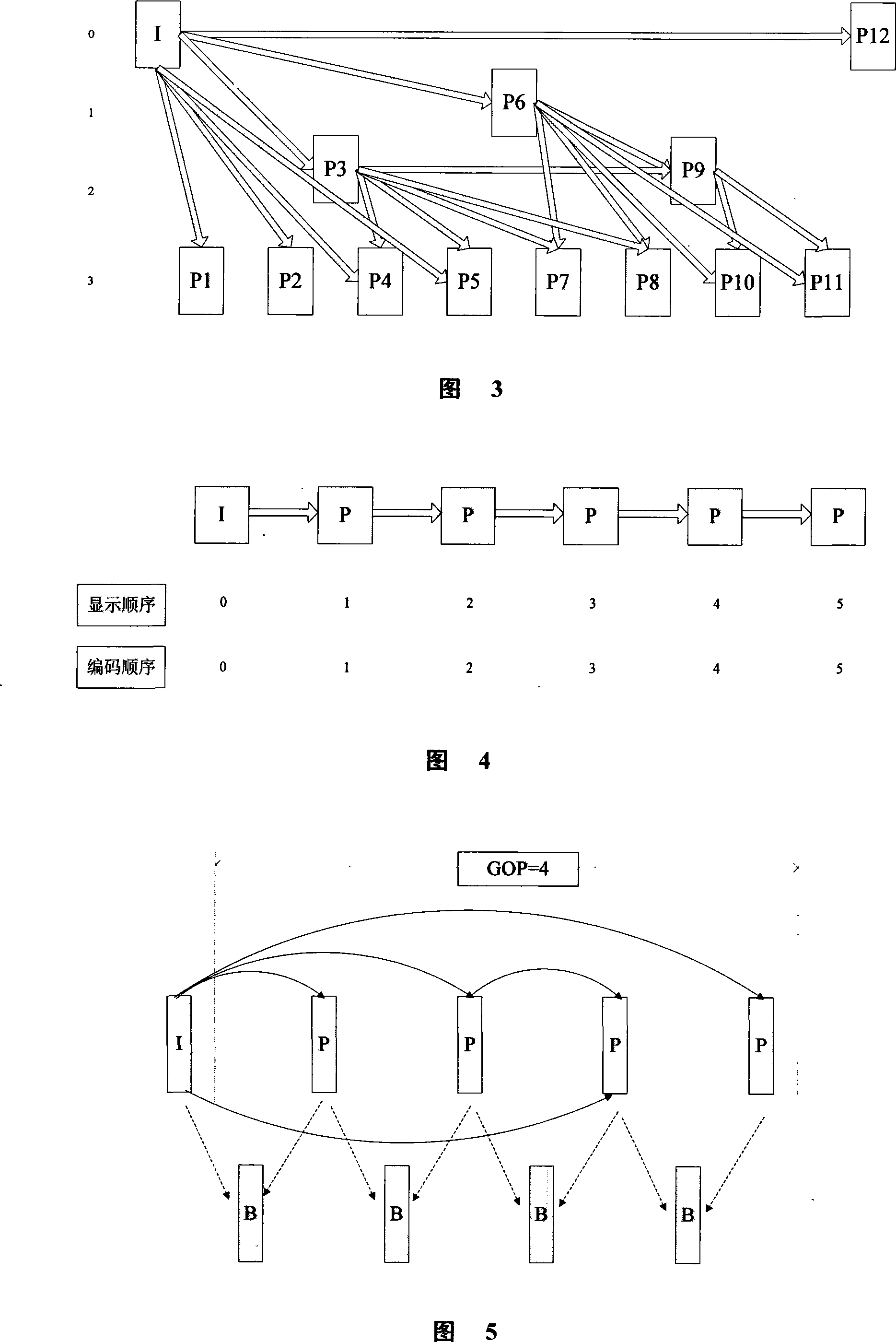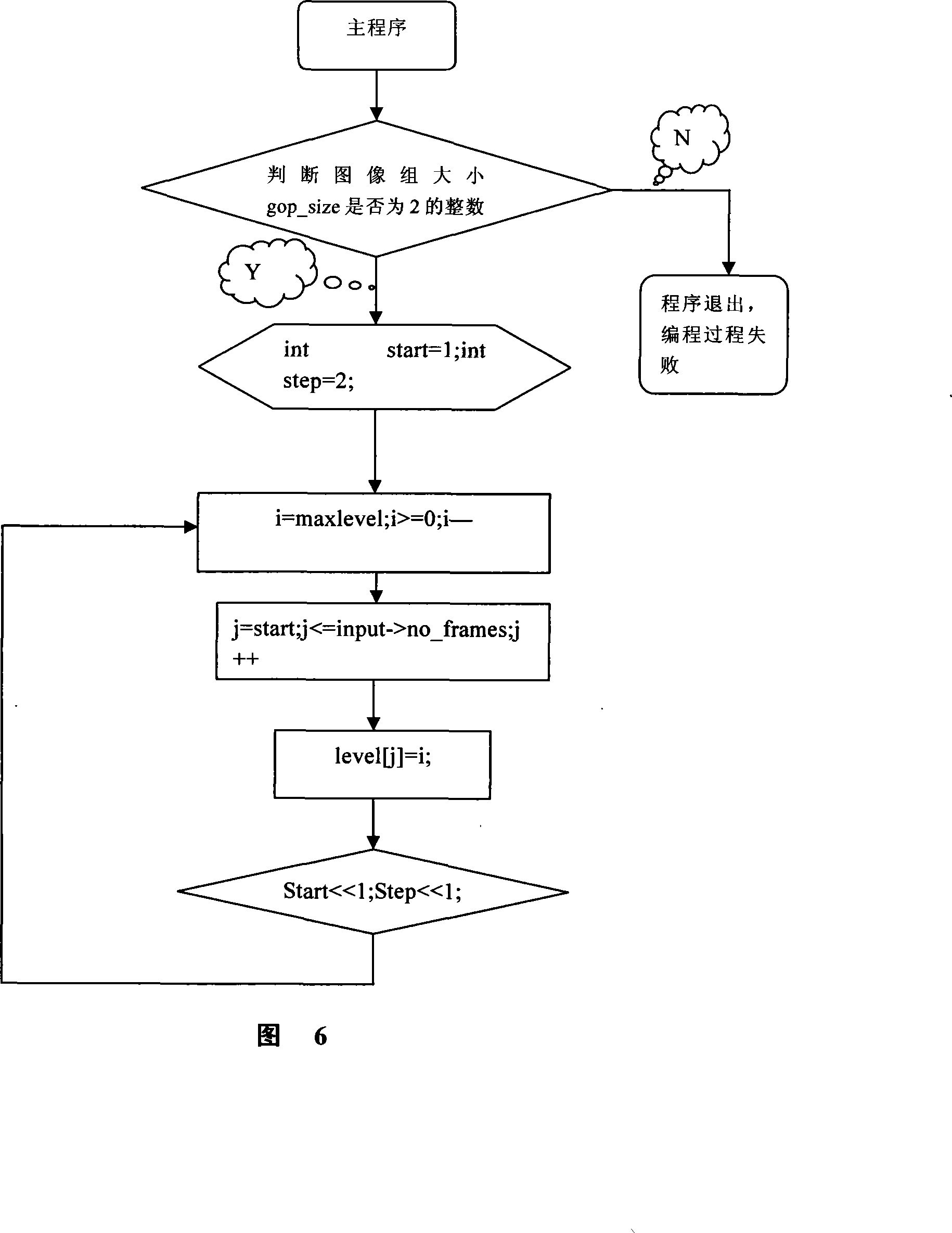Time-domain gradable video encoding method for implementing real-time double-frame reference
A video coding and time-domain technology, applied in the field of video coding, to achieve the effect of flexible expansion and delay limitation
- Summary
- Abstract
- Description
- Claims
- Application Information
AI Technical Summary
Problems solved by technology
Method used
Image
Examples
Embodiment Construction
[0029] The present invention provides a time-domain scalable video coding method that realizes real-time double-frame reference, specifically: the video image coding sequence is consistent with the display sequence, and the current frame uses at most two reference frames during the coding process, and the coded The code stream is hierarchical in the time domain. When encoding, first calculate the temporal layer of the current image according to the display order of the currently encoded image, and then obtain the reference image of the current frame according to the reference frame selection strategy. After the current image is encoded, update the reference frame buffer according to the reference frame update strategy.
[0030] The present invention will be further described below in conjunction with the embodiments and accompanying drawings, but the present invention is not limited.
[0031]The invention provides a real-time dual-frame reference implementation method of time-...
PUM
 Login to View More
Login to View More Abstract
Description
Claims
Application Information
 Login to View More
Login to View More - R&D
- Intellectual Property
- Life Sciences
- Materials
- Tech Scout
- Unparalleled Data Quality
- Higher Quality Content
- 60% Fewer Hallucinations
Browse by: Latest US Patents, China's latest patents, Technical Efficacy Thesaurus, Application Domain, Technology Topic, Popular Technical Reports.
© 2025 PatSnap. All rights reserved.Legal|Privacy policy|Modern Slavery Act Transparency Statement|Sitemap|About US| Contact US: help@patsnap.com



